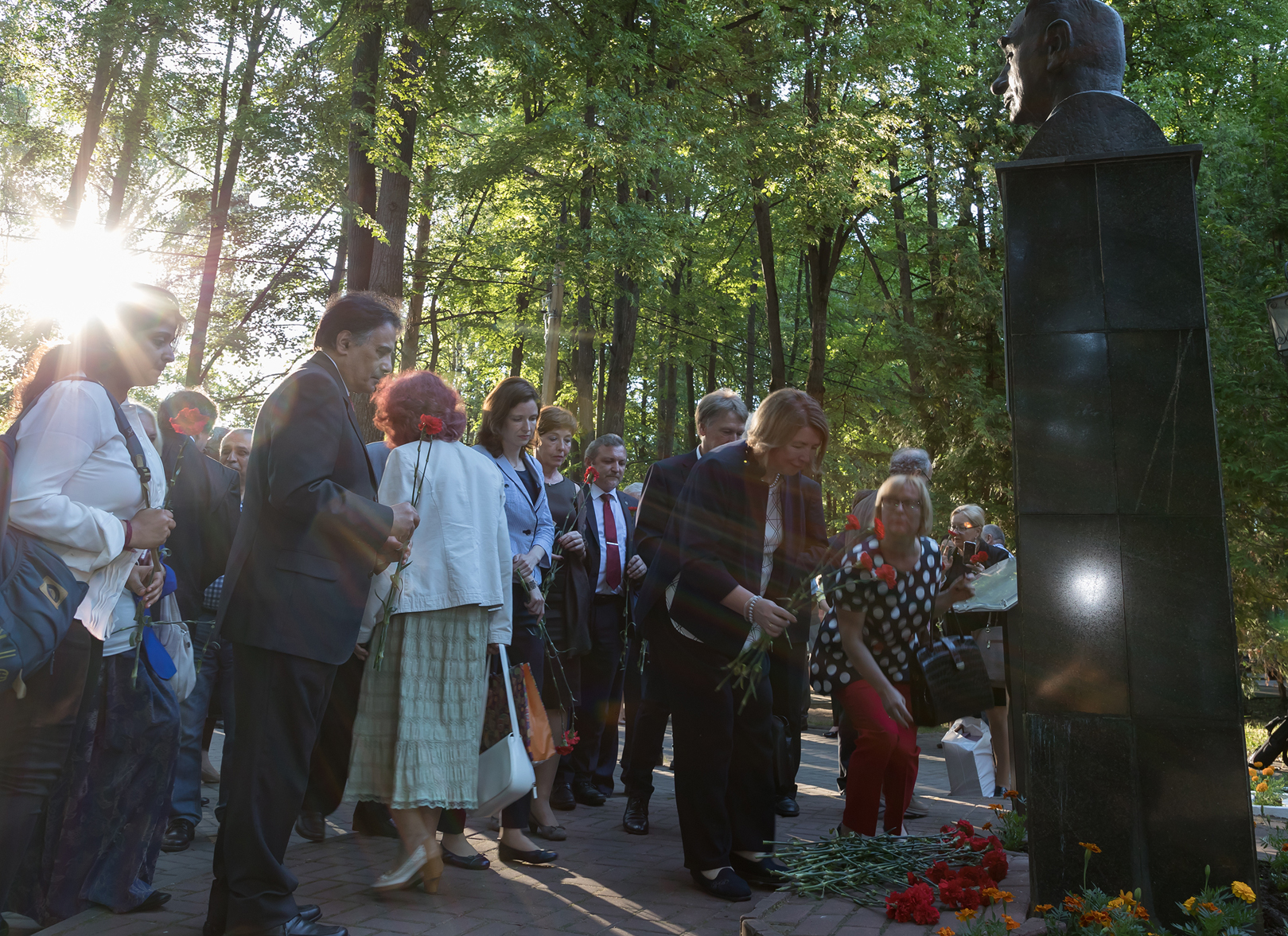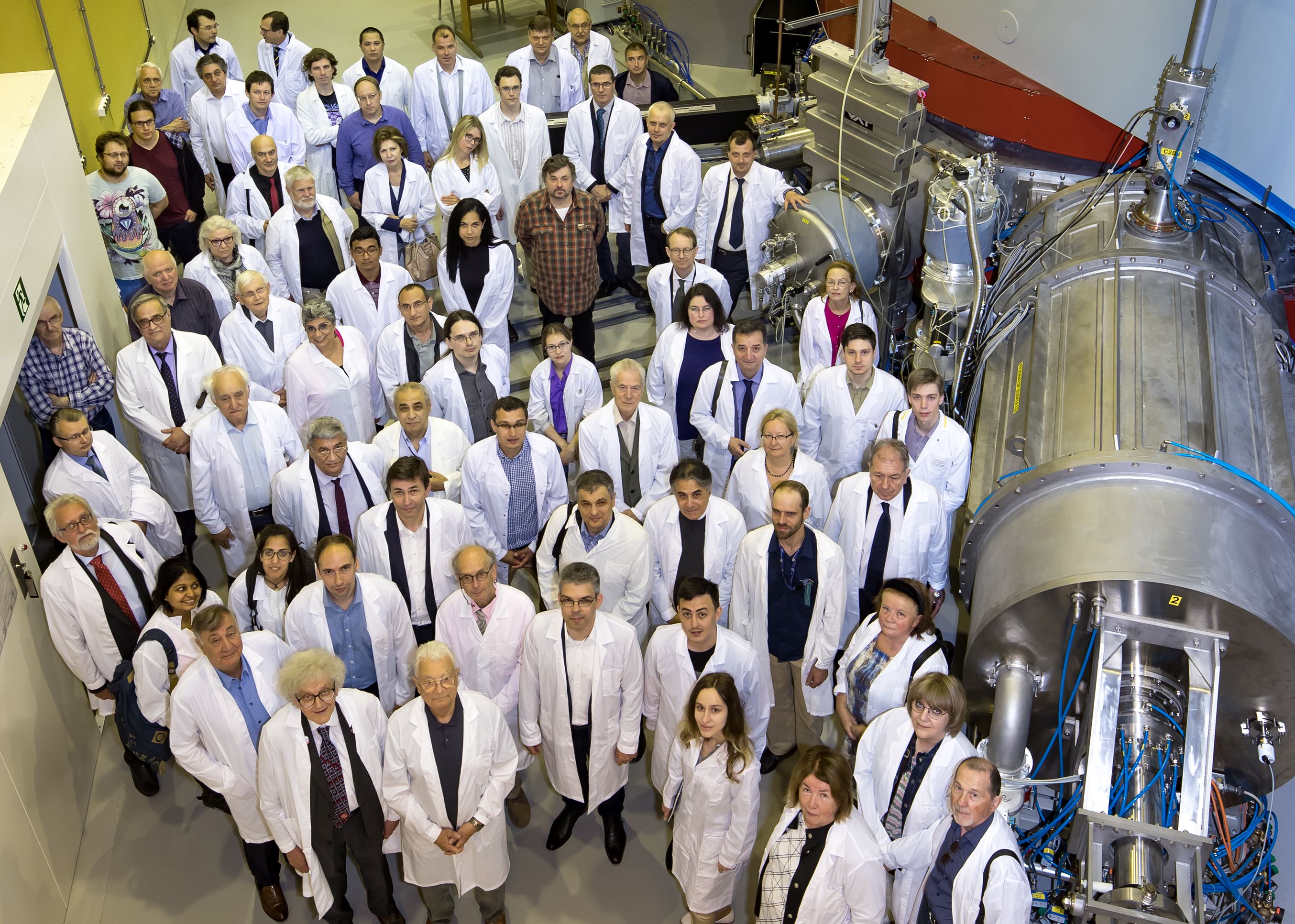The Year of the Table: international symposium in Dubna
News, 19 June 2019
The International Symposium “The present and the future of the Periodic Table of Chemical Elements” held at the end of May in Dubna in the Joint Institute for Nuclear Research, in the frames of the International Year of the Periodic Table declared by UNESCO, became a large-scale and bright event. It was attended by representatives of the Russian Academy of Sciences, the Ministry of Higher Education and Science, international scientific and social organizations, namely UNESCO Assistant Director-General for Science. Shamila Nair-Bedouelle, President Designate of the International Union of Pure and Applied Physics (IUPAP) Prof. Michel Spiro, and ex-president of the International Union of Pure and Applied Chemistry (IUPAC), co-chairman of the international committee on celebration of the International Year of the Periodic Table, RAS Corresponding Member Prof. Natalia Tarasova. Moreover, leading scientists of laboratories from all over the world, active researchers on synthesis and study of new elements of the Periodic Table attended the event.
Photos and video from the past Symposium
Opening the official part of the Symposium in the JINR Cultural Centre “Mir”, Director of the Joint Institute Academician Victor Matveev noted that the Periodic Table became with no doubts the heritage of our civilization: “The history of discovery of chemical elements is reflected in the Table; it reflects the level of the technical development of the society. It is a historical artefact that does not need restoration, it only needs further development.” This comment was brightly continued in the speech by Director of the D.I. Mendeleev Museum and Archives Prof. Igor Dmitriev (St. Petersburg University).
Only two out of numerous feedbacks of participants of the Symposium will be cited below. They were made by laureates of the International Flerov Prize awarded at the festive event in Dubna: Prof. Martin Poliakoff (Nottingham University, Britain) and Director of the Institute of Problems of Sustainable Development of the Mendeleev University of Chemical Technology Natalia Tarasova.
 Laureates of the Flerov Prize Martin Poliakoff, RAS Corresponding Member Natalia Tarasova and laureates of the Flerov Prize for school students graduates of the Flerov Lyceum #6 Alexandra Surkova and Grigor Adamyan with Academician Yuri Oganessian
Laureates of the Flerov Prize Martin Poliakoff, RAS Corresponding Member Natalia Tarasova and laureates of the Flerov Prize for school students graduates of the Flerov Lyceum #6 Alexandra Surkova and Grigor Adamyan with Academician Yuri Oganessian
On the first day of the Symposium, Prof. Martin Poliakoff as an English chemist shared his view on activities of Mendeleev and results achieved by him. Prof. Poliakoff is not just a chemist, he is an active science popularizer. He offered to participants of the high meeting to go for an excursion around his university office each item of which brightly and vividly, and sometimes in unexpected ways, illustrates the continued importance of the art of the prominent Russian scientist. The English chemist and Foreign Member of the Russian Academy of Sciences gifted a tablecloth depicting the modern version of the Mendeleev’s Periodic Table to his colleague Academician Oganessian.
At the presentation of the Superheavy Element Factory in the Laboratory of Nuclear Reactions, Martin Poliakoff declared to a journalist of the JINR Weekly Newspaper: when he was here two years ago, there was only a magnet in the building… “What I see today deeply impresses. I am especially thrilled with the thought that maybe soon elements 119 and 120 will be discovered here. An ion beam has been recently traced here, and I took a piece of gypsum to place it in my “Kunstkamera ”, and say to my visitors that this item is taken from a room where new elements will be discovered. I congratulate all the creators of this miracle and wish them every success!”
Natalia Tarasova supported her colleague’s point of view: “I believe that element 120 will be synthesized in Dubna. And I hope that Russian science will keep the positions inherited by our prominent predecessors. There are discoveries the importance of which may have not been evaluated by merit in the past, but now it is definitely clear that the Mendeleev’s Periodic Law is a fundamental heritage of humanity. I am happy to be here in these days of May. Awarding of the Flerov Prize is a big honour to me as far as I was lucky to have talks with Georgy Nikolaevich and I clearly realize his larger-than-life personality. He was a patriot of science and his country. And I hope that I will be able to justify this trust.
Today, we are talking about the present and the future, and I would like to recall the recent past because the future is impossible without the past… The first official document sent to UNESCO by international organizations with a proposal to hold the Year of the Periodic Table was the address signed by JINR Director Victor Matveev and heads of radiation laboratories of the USA. It was adopted when we were celebrating the inclusion of elements 113, 115, 117, and 118 into the Periodic Table. And then many letters from historians, biologists, astronauts, musicians, chemists, and physicists were got thus proving that the Periodic Table is no doubt the heritage of all mankind. When the UN considered the decision to hold the International Year, it was adopted with a consensus in spite of a complicated situation in the world you are well aware of. And this consensus proves that great discoveries have no boundaries, and scientists create a language allowing our world to stay united…”
 Floral tribute to the monument of the founder of the Laboratory of Nuclear Reactions at the Flerov street
Floral tribute to the monument of the founder of the Laboratory of Nuclear Reactions at the Flerov street
The second day of the Symposium was held in the Flerov Laboratory of Nuclear Reactions. This part of the scientific forum was opened by FLNR Scientific Leader Academician Yuri Oganessian. Participants of the event together with FLNR Chief Engineer G. Gulbekian and Head of the Sector V. Utenkov visited the recently launched complex of the Superheavy Element Factory. Reports were made on research conducted in laboratories all around the world and promising studies by leading scientists, heads of scientific centres participating in the synthesis and study of superheavy elements extending the boundaries of the Periodic System discovered by Dmitry I. Mendeleev.
“All these elements,” Director of the Flerov Laboratory of Nuclear Reactions Sergey Dmitriev said, “were synthesized at the U-400 accelerator complex of our laboratory that is now a world leader in this field. Our gas-filled separator the efficiency of which is 30-35 per cent has become the basic facility for the synthesis and identification of new elements. Synthesis of new elements 114-118 was carried out in reactions of actinide targets with calcium isotope with the atomic weight of 48. It is a unique neutron-excess isotope of calcium (20 protons and 28 neutrons), its content in natural calcium is only 0,187 per cent. We already use samples enriched with calcium-48, close to 70 per cent.
 The scientific programme of the Symposium in the FLNR Conference Hall was opened with the report by Yuri Oganessian
The scientific programme of the Symposium in the FLNR Conference Hall was opened with the report by Yuri Oganessian
We need to move from calcium-48 to producing beams of heavier ions: titanium-50, chromium-54, and others. It is the key task of the created Superheavy Element Factory that is aimed at, first of all, synthesis and conducting research with very low production cross-sections, at least, by an order of magnitude lower than in reactions with calcium-48. It is obvious that we should increase the effectiveness of our experiments for dozens of times for it. We are going to synthesize elements 119 and 120 to study their properties. Creation of the Factory will open a wide field of research on the study of already discovered elements, from 112 to 118. Then we will be able to conduct experiments connected with nuclear spectroscopy, mass measurement, the study of chemical properties of new superheavy elements.
I would particularly like to note that almost all JINR Member States took part in the creation of the new accelerator DC-280. In fact, our new accelerator is a collective creation, and all modern technologies in the field, which our states master, are used in it.”
Synthesis of new elements, according to Academician Yuri Oganessian, FLNR Scientific Leader after whom element 118 is named, determines the development of heavy nuclei physics for many years to come. It greatly influences the development of related sciences, such as chemistry, nuclear physics, astrophysics, and others. Experiments of Dubna scientists and their colleagues in other scientific centres of the world on the synthesis of new superheavy elements help to find the answer to the question the humanity has been trying to deal with since the beginning of its history: where is the limit of the material world? It should be reminded that at first, the Mendeleev’s Table consisted of only 63 elements, and great Niels Bohr believed that there could not be any elements after the number 100. Scientists in Dubna have already discovered element 118 and prepare new experiments developing a more powerful accelerator for it (it will allow to increase the beam’s intensity for 10 times) and simultaneously studying chemical properties of already synthesized elements. It is also a large field for scientific search giving new fundamental knowledge.
 Participants of the Symposium in the DC-280 accelerator hall
Participants of the Symposium in the DC-280 accelerator hall
Evgeny Molchanov, JINR Weekly Newspaper
Photos by Elena Puzynina